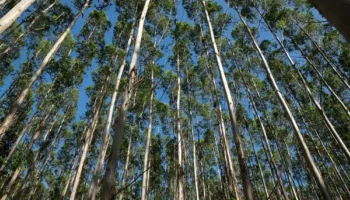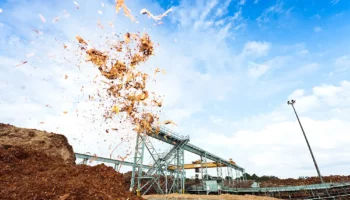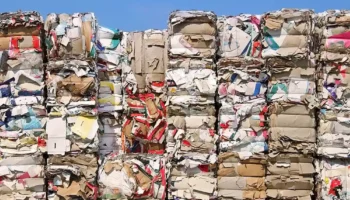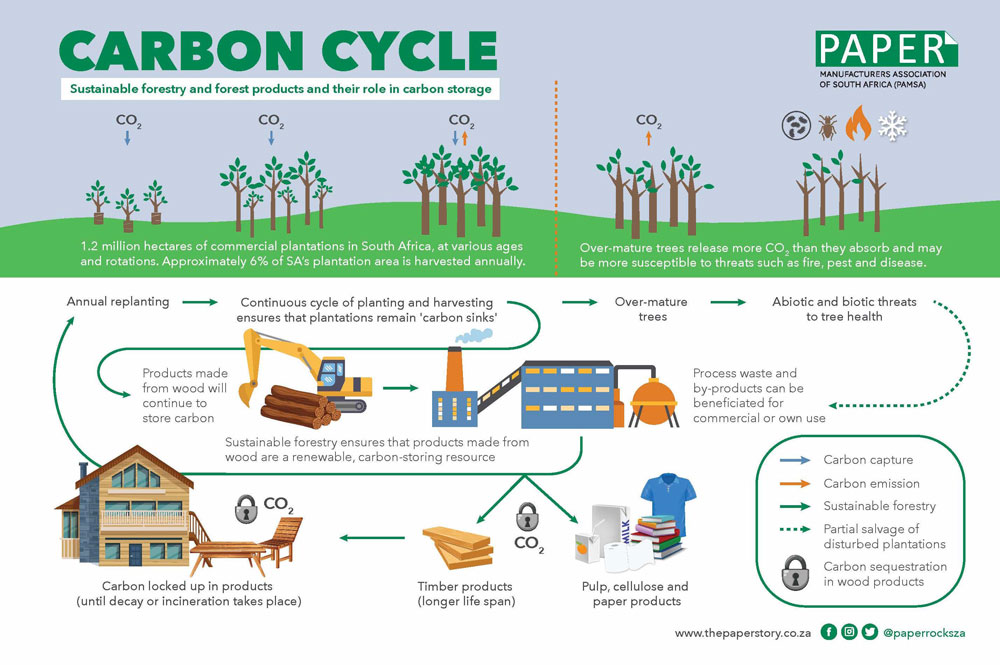Action Areas – The Environment
For the pulp and paper sector, environmental stewardship encompasses the entire forestry value chain, from growing trees responsibly and making efficient use of raw materials and resources through to the effective and efficient recovery of paper for recycling.
PAMSA represents the local industry in these environmental areas:
Land and Air
-
Farmed wood for pulp and paper making
Trees in commercial forestry are much like any other crop – specific species are planted, harvested and replanted in sustainable rotation, so that there are always trees at various stages of growth and maturity, ready to harvest for generations to come. The sector is even responsible for maintaining and protecting some of South Africa’s indigenous forests.
South Africa’s timber plantations cover 1.2 million hectares of land, and are located in five of the country’s nine provinces. Forestry and its related industries are responsible for hundreds of products – and many thousands of jobs. Approximately 150 000 South Africans are employed by these industries, which contribute R62 billion to the country’s economy every year.
The commercial forestry sector focuses on the responsible cultivation of trees for timber. This means using sustainable, efficient and effective practices that not only have the lowest environmental impact, but generate the best possible social and economic benefits, all while producing a wide range of renewable and versatile wood and paper products.
Timber plantations take up only 7% of the planet’s forest area but provide around half of the wood used for industrial and processing purposes. (Source: FAO)
-
Climate change and carbon sequestration
The global forest products industry has a long-standing commitment to climate change mitigation, from growing trees and reducing its carbon footprint across each and every aspect of its value chain. Through the process of photosynthesis, trees absorb carbon dioxide (CO2) from the atmosphere, store the carbon for growth and release oxygen. This is why trees – in both natural forests and well-managed planted forests – are important as a mitigation measure for climate change. The carbon stays locked up in the wood and paper products, which can be further prolonged through re-use and recycling.
Globally and locally, the industry has made significant strides in addressing climate change through:
-
- Its engagement in responsible forest management, reflected in the constantly growing number of forest areas that are third-party certified, and from which the industry sources its raw material.
- The reduction of its specific greenhouse gas emissions at mills.
- The growing contribution of biomass and renewable energy to fulfil the industry’s energy needs.
- The improvement in the recovery and recycling of paper-based products.
- The substitution of fossil-based products with wood-based alternatives.
-
Biodiversity and conservation
Timber plantations from which our member companies source wood fibre are nestled among biodiversity-rich areas such as grasslands, wetlands and indigenous trees.
The natural forests under our sector’s care are protected by law. These areas are carefully managed by forestry companies so that alien invasive plant species are controlled and plantations are protected from fire, pests and disease. In addition, only 70% of forestry-owned land is managed for production, and a large proportion is left in its natural state. This helps to form ecological networks of wetlands, grasslands and indigenous flora throughout the forestry landscape, providing a habitat for countless animal, bird and fish species.
Read more about forestry’s contribution to conservation.
-
Emissions and air quality
PAMSA’s member companies comply with the requirements of the Air Quality Act and conduct regular monitoring and reporting on air quality. Some mills capture sulphide emissions to generate gypsum, a key ingredient in fertiliser production and a main constituent in many forms of plaster, blackboard chalk, drywalling and ceiling board.
-
Carbon sequestration and carbon tax
The Carbon Tax Act came into effect on 1 June 2019. The first phase from 1 June 2019 to 31 December 2022 applies to activities that directly emit greenhouse gas emissions. The tax includes various allowances in the first phase, including a 100% allowance for forestry.
The role of forestry in carbon sequestration is well-recognised as a mechanism to mitigate increasing greenhouse gas emissions. Sustainable forestry management is based on scientific analysis to maximise carbon storage by maintaining trees in an active growing phase and minimising the risk of the release of carbon back into the atmosphere due to disturbances such as fires.
Following harvesting, remnants like branches and foliage have traditionally been burnt to reduce fuel loads and wildfire risks. Companies are already moving towards a higher rate of mulching as a more sustainable option. Organic matter acts as a slow-release fertiliser and carbon source for the subsequent rotation. This is, however, only possible where the terrain allows for mechanical mulching equipment to operate.
For more information on the South African forestry sector visit Forestry Explained and Forestry South Africa.
Water
Everything on earth requires water to thrive which is why efficient and responsible use of water is essential. Water is an important resource for forestry, as well as pulp and paper operations.
-
Water use at plantation level
Just like an industry or human activity, forestry plantations have both positive and negative impacts on the environment. One of the negative impacts is that they generally do use more water than the grasslands they generally replace. However, on a national scale, the amount of water is relatively small. On average, South African forestry uses 3% of available water resources –this varies from place to place and during different times of the year. To put this into context, irrigated agriculture uses approximately 62% of South Africa’s available water resources (Source: Forestry South Africa).
-
- Learn more about how trees use water.
- Learn more about how water use in forestry is regulated.
-
Water use at mill level
Water use and efficiency is key metric for PAMSA’s member companies as water is a vital resource throughout the pulp and paper making process. This includes raw materials preparation (washing of wood chips), pulp cooking, washing and screening, and use in paper machines (pulp slurry dilution and fabric showers).
It is also used for process cooling, materials transport, equipment cleaning, general facilities operations, and to generate steam for use in processes and on-site power generation.
Mills are continually identifying opportunities to save water throughout the production process, ensuring extensive water reduction, re-use and recycling within these processes and improving the quality of the waste water (effluent) the mills discharge.
In some instances, water is reused up to ten times throughout the mill and requires different levels of treatment depending on its use.
For example, water used in steam systems (boiler feedwater) must be purified to minimise corrosion. Once steam is condensed, it is recaptured and reused in the steam system. By contrast, raw water can be used without any treatment for non-contact cooling systems and can be returned directly to the river as long as it is not too warm.
Water and waste water (effluent) is routinely tested using temperature controls, oxygen level controls and other metrics to comply with relevant environmental regulations.
A lot of steam is generated by the paper machines and cooling towers. The water vapour is emitted from the process, and is what can be seen from the mill chimney stacks. The steam re-enters the atmosphere and ultimately will end up as precipitation in the local ecosystem.
DID YOU KNOW? When timber is harvested, 50% comprises water – this water is used in the manufacturing process. In fact, pulp contains 99% water and additives and 1% fibre. Once it has gone through the forming and press sections of a paper machine, it is 5% water and 95% fibre.
Member and industry case studies
Energy
-
Cleaner papermaking with renewable energy
The South African pulp and paper sector has been measuring its environmental performance for several years and continuously makes improvements to drive efficiency and cleaner production.
From an energy perspective, the paper and pulp industry uses both fossil fuels (petrol, diesel, oil and coal) and biomass-based fuels like black liquor and tree residues. “Black liquor” is a by-product from digesting pulpwood chips in the chemical pulping process.
For many years, efforts have been focused on efficient, renewable and sustainable energy utilisation. Many mills generate their own energy through co-generation (steam and electricity) using biomass and coal as fuel. Co-generation is a more efficient use of fuel as the heat from the generation of electricity is used to produce steam. Biomass is regarded as a renewable and carbon-neutral fuel and has a lower carbon footprint than coal and a number of mills generate more than half of their energy needs from biomass fuel.
Since there is very little water loss attributable to electricity generated via co-generation, this further implies that this method of power generation is a suitable option, within the scarce water context of South Africa. It is important to note, however, that although the pulp and papermaking industry does generate a significant portion of its own electricity, it presently remains reliant on the national grid for the balance of its power needs.
Want to know more about paper recycling? Visit our Paper Recycling Explained section.
Waste
The papermaking industry holds the view that something that has value or that can be re-used is not waste, but a valuable by-product. Using more of the tree is a goal to which the industry constantly strives, and is a focus of much research and development. There are various kinds of ‘waste’ in the forestry-paper value chain. The most common form of waste stewardship is paper recycling which South Africa has been doing since 1920.
- Recovery and re-use of paper fibre
- The recycling of waste paper provides the industry with a useful alternative fibre for new products, especially paper packaging and tissue. Not only does paper recycling divert a reusable product from landfill, it also keeps carbon locked up for longer.
Examples of converting waste into products of value and use:
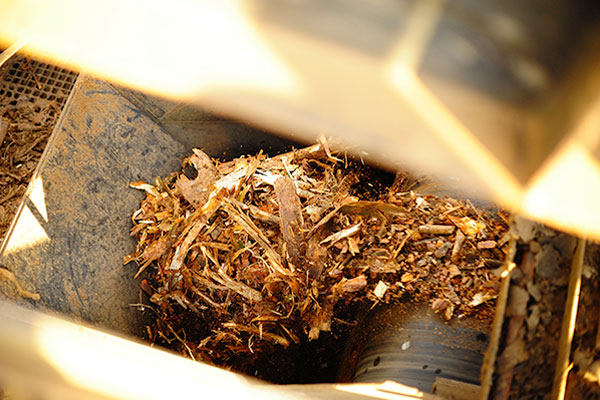
Bark, treetops, limbs and other woody material are remnants of the harvesting process. In many instances, they are left on the forest floor to act as a mulch and composting layer for the next planting. They also minimise soil erosion. Some bark is used for on-site energy generation at pulp and paper mills.

Lignosulphonate, recovered from the wastewater streams at pulp and paper operations, has binding, dispersing, emulsification and sequestration properties, making it useful for a range of applications. These include dust suppression agents, concrete additives, pelleting agents in animal feed and mineral granulation aids, to name a few.

Paper sludge is the solid residue recovered from wastewater streams in the pulping, papermaking and paper recycling processes. Depending on the mill, it can be burned for energy production or used for composting in agriculture.

Tall oil, a versatile by-product of the kraft pulping process, can be used as a renewable chemical raw material and to make detergents, lubricants and paint additives.
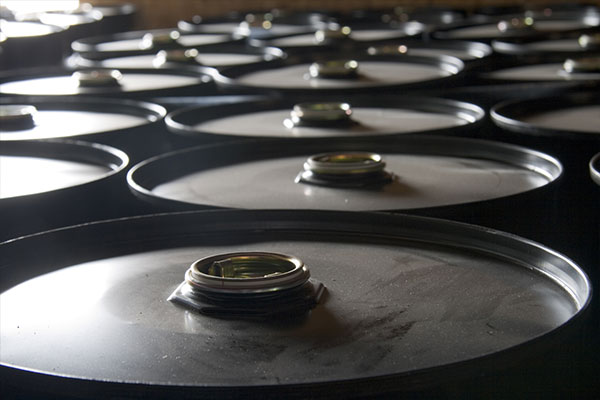
Used oil is dewatered, chemically treated, refined and filtered for reuse in various grades of base oils.

Lime, an important additive in pulping, can be recovered from wastewater streams and used as a soil enhancer in plantations and agriculture.

Gypsum is recovered from flue gas and can be used as a fertiliser.

Boiler ash can be used to make construction blocks and slabs.

